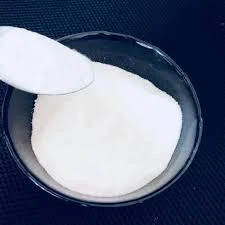
12月 . 28, 2024 15:06 Back to list
hpmc cmc
Understanding HPMC and CMC Versatile Polymers in Modern Applications
Hydroxypropyl methylcellulose (HPMC) and carboxymethyl cellulose (CMC) are two important cellulose derivatives that have found a wide array of applications across various industries. These polymers, derived from natural cellulose, exhibit unique properties that make them invaluable in numerous formulations, especially in pharmaceuticals, food, cosmetics, and construction.
What are HPMC and CMC?
HPMC is a semi-synthetic polymer derived from cellulose that is modified by the substitution of hydroxyl and methoxyl groups. Its unique chemical composition gives it distinct properties such as film-forming capabilities, adhesion, and thickening. This makes it an excellent choice for applications where texture and stability are important.
On the other hand, CMC is a water-soluble derivative of cellulose that has been chemically treated to introduce carboxymethyl groups. Its solubility in both cold and warm water, along with its thickening abilities, makes it a preferred ingredient in the food industry as a stabilizer and thickener. CMC also exhibits excellent binding properties, making it beneficial in various applications.
Applications in Pharmaceuticals
Both HPMC and CMC play a crucial role in the pharmaceutical industry. HPMC is commonly used as a binder in tablet formulations, as it improves the mechanical strength of tablets while also enhancing their solubility. It is also used in controlled-release formulations, allowing the gradual release of active ingredients. Additionally, HPMC serves as a matrix for hydrophilic and hydrophobic drugs, providing stability and consistency in drug delivery systems.
Conversely, CMC is widely used as a thickener and stabilizer in liquid pharmaceutical formulations, such as syrups and suspensions. Its ability to improve the viscosity of these solutions ensures that active ingredients are evenly distributed and remain suspended, enhancing the product's effectiveness and shelf life.
hpmc cmc

Role in the Food Industry
In the food industry, both HPMC and CMC have become indispensable. HPMC is often utilized in gluten-free products, providing the necessary texture and mouthfeel that gluten typically offers. It also acts as a stabilizer in various food emulsions, preventing separation and ensuring uniformity.
CMC, with its exceptional thickening properties, finds applications in a range of food products, including salad dressings, sauces, and dairy products. It helps maintain the desired texture and mouthfeel while also enhancing shelf stability. Moreover, the use of CMC in low-fat and reduced-calorie food products has increased due to its ability to mimic the creamy texture typically provided by fats.
Innovations in Construction and Cosmetics
Outside of food and pharmaceuticals, HPMC and CMC are finding novel uses in construction and cosmetics. In construction, HPMC is employed as a water-retaining agent in cement-based products and tile adhesives, ensuring better workability and adhesion. Its film-forming properties also contribute to improved performance in construction materials.
In the cosmetics industry, CMC is used as a thickening agent in lotions, creams, and gels, helping to achieve the desired consistency and stability in cosmetic formulations. Its non-toxic nature makes it a safe additive for personal care products.
Conclusion
HPMC and CMC are remarkable cellulose derivatives that serve a wide range of applications across various industries. Their unique properties—such as film formation, thickening, and binding—make them crucial ingredients in pharmaceuticals, foods, construction materials, and cosmetic products. As research continues to expand the knowledge of these polymers, it is likely that their applications will only become more diverse, further demonstrating their versatility and importance in modern formulations.
-
Unlocking the Benefits of HPMC Products: A Gateway to Versatile Applications
NewsAug.07,2025
-
Unleashing the Potential of HPMC Ashland: A Comprehensive Look
NewsAug.07,2025
-
Tile Bonding Cellulose: The Key to Superior Adhesion and Durability
NewsAug.07,2025
-
Hydroxypropyl Methylcellulose Powder: The Versatile Component in Modern Pharmaceuticals
NewsAug.07,2025
-
Hydroxyethyl Cellulose: The Versatile Solution for Various Industries
NewsAug.07,2025
-
Hydroxyethyl Cellulose (HEC): The Versatile Polymer for Various Applications
NewsAug.07,2025







